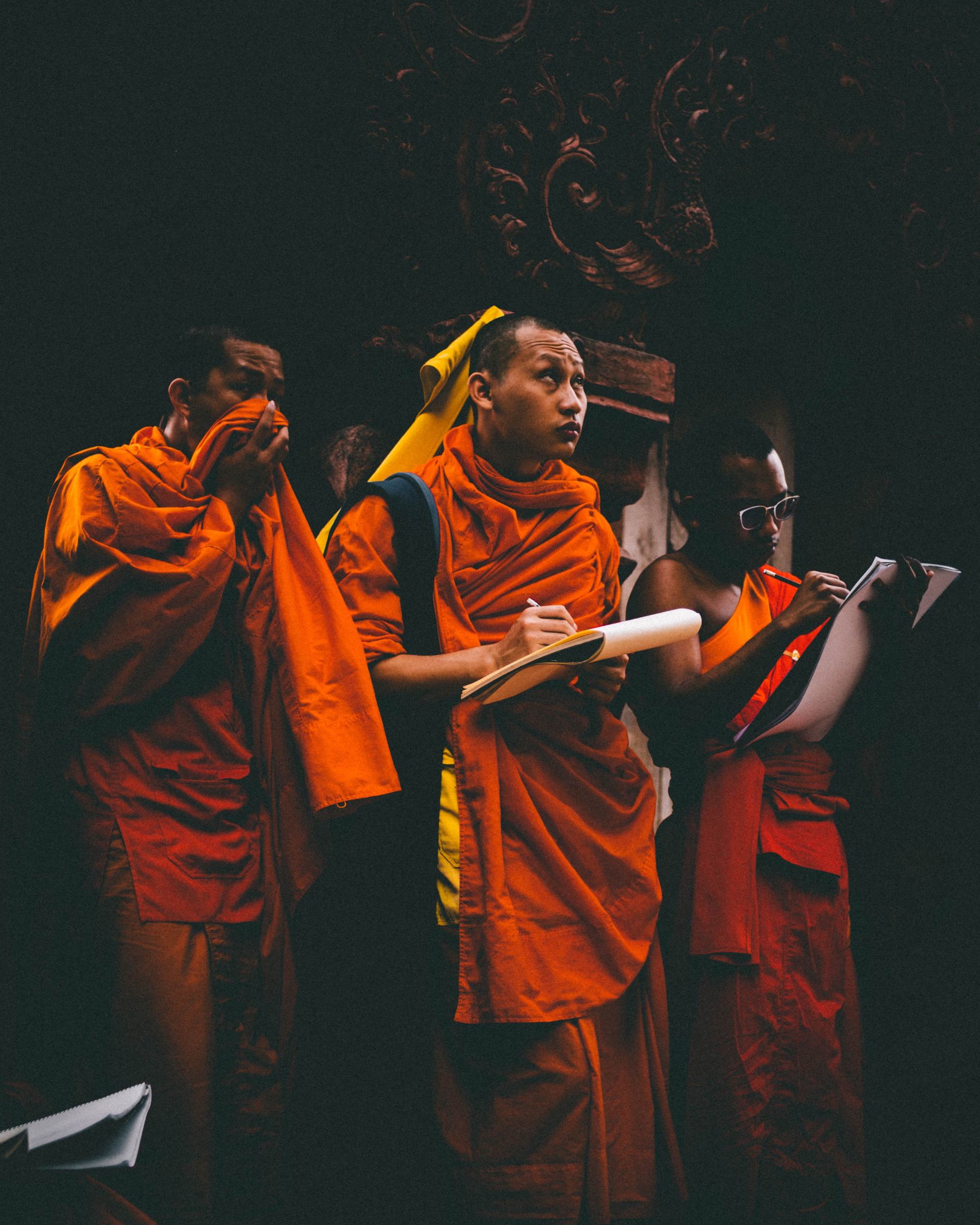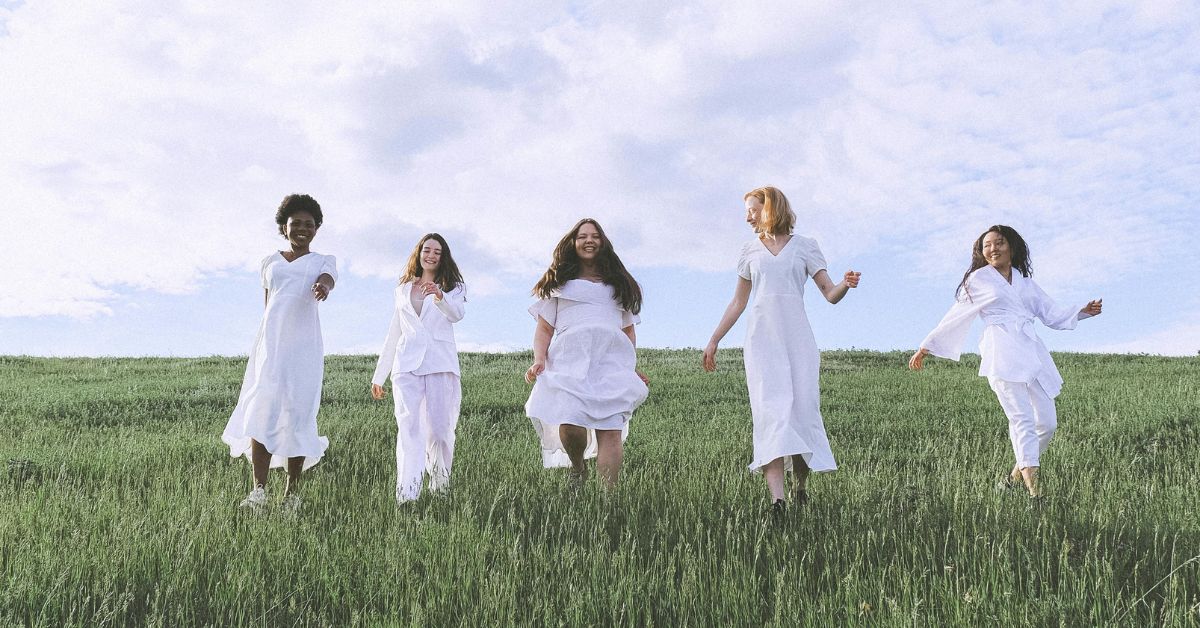In addition to huge temples, golden Buddhas and breathtaking nature, people traveling in South-East Asia are amazed by the presence of Monks and nuns.
The people in charge of spread Buddha’s teachings are – indeed – Monks.
They renounced ordinary society to live a monastic life.
Like everyone else, I was very happy when I first saw a Monk walking down the street in Bangkok, Thailand.
As I was exploring the different cities and temples, it became more “normal” to me to see them, but still, I was curious. I wanted to know more and to learn about their life.

I started to do some research and I found out some temples were providing a “monk chat”. All you have to do is just sit there and talk with him about Buddhism and his daily life. Monks are really happy to answer your questions because they have the opportunity to improve their English.
Luckily, a temple close to my hostel was arranging a monk chat, so I decided first to visit the place and later to have a chat.
I was excited, I had all my questions ready and I couldn’t wait to sit there and talk with them.
However, as I stepped in the temple area, I saw a sign outside saying “No women allowed”.
Next to it, a small poster explained that due to menstruations, women couldn’t step in because considered dirty.
This sounded just weird to me. I had always considered Buddhism as the most open-minded religion and that sign simply didn’t make any sense to me.
Therefore, when it was time to meet the monk, my questions had changed.

Chatting with a monk
As I said before, a “monk chat” is simply a conversation with a monk.
In my case, it happened to be a novice: a young boy still studying to become a monk.
He was very nice and smiling. He told me that becoming a Monk brings a good name to the family. That’s why children are encouraged to study in a monastery at least once in their lives, even for a short period of life.

Novices have 10 basic rules, which include no stealing, no harming or killing. They can’t do sport either drink alcohol. He also told me they only have breakfast and lunch. During the afternoon they can only drink water or juices.
It’s not allowed for them to spend money or to touch women.
As soon as he said this last sentence, I remembered about the sign I saw in the temple! I immediately asked him if women could be “monk” as well.
He was a bit embarrassed as he told me he was not sure. He explained to me that he was originally from Myanmar, and there, women could be nuns.
After talking with him I only wanted to go to Myanmar to keep researching about monks and nuns.

A nunnery close to Mandalay city
After landing in Myanmar and exploring a bit of the city, I started again my researches and I found a nunnery in an old city, close to Mandalay.
The drive was half-hour long and when I got there the nuns had already finished their lunch.
I thought it was too late because, according to every single article I read, you could only talk with them during lunch.
In the end, a nun came to me and asked me if I needed anything (probably I was looking desperate!) and I could finally ask her all my questions.
But first, here’s why nuns are not completely accepted.

Nun’s History
Nuns (also called “bhikkhuni“) have always been part of Buddhism. According to history, Buddha’s mother gathered a group of women together and convinced Buddha they were equal to men. For this reason they deserved an equal chance to benefit from his teachings and reach the nirvana.
Unfortunately, bhikkhuni have gone unrecognized by the Buddhist order. As a matter of fact, this causes problems for women who want to be accepted as equals.
Buddha required that a new nun could only be ordained by a monk and a nun together. However, after the fall of the city, both orders were wiped out.
The king brought back only the monks’ order. For this reason, nuns are not fully accepted with monks.

About Monks and Nun’s life
The nun who I met was very kind, she had a soft voice and she was smiling all the time. Her name means “the one who is clever“, and it really fits her. She could speak fluent English and knew a lot about Buddhism and life in the nunnery.
She told me about her daily routine. Every day she has to wake up at 4 am and they have a quick meditation. Later they have to clean the nunnery and prepare breakfast. Every woman belongs to a group and every day they have a specific duty.
Their day is then divided into cleaning the nunnery, make lunch ready and study for their classes.
She explained to me that monks and nuns are in every Buddhist country. In Myanmar and Nepal, they wear a pink robe, while in Thailand, Laos, Cambodia and most other countries it’s a white robe.
Nuns have slightly different rules. Unlike monks, they don’t have the obligation to take the vows at least once in their life. It’s a choice they make.
Finally, she explained to me why some women couldn’t enter certain places.
In ancient times, it was said that you have to be clean to enter Buddha’s place of teaching. So it was decided that women were unsuitable. Menstruation made them dirty so they were not allowed to enter some pagodas.

In reality, Buddha’s main concern was with the so-called “inner-washing”, which means developing a mind of love and kindness, be honest and free from greed.
Some Buddhist cultures have forgotten Buddha’s words and still adhere to various menstruation superstitions.
Unfortunately, this is what happens in most religious. Sometimes the good principles of a cult are mistaken by human beings. This is how false beliefs are born.
Final thoughts
In the end, I think the best way to understand a culture is to live and interact with local people. They will always know more than you do!
However, I believe it is important to do some personal researches as not everyone might speak English, or because sometimes is hard to explain something which belongs to our own culture.
In any case, if you are traveling in South-East Asia or simply want to know more about Buddhism, A Guide To Buddhism is a very good website you can check! It easily explains Buddha’s teachings and his life.
Another interesting website is THIS one, it’s an introduction to Buddhism, very interesting and easy to understand.

We simply shouldn’t stop in front of the superstitions we may encounter every day but we have to go beyond that and find the truths behind every false belief!
I hope you learned something about monks and nuns in South-East Asia! If you found this valuable, help me share this post!













One Response